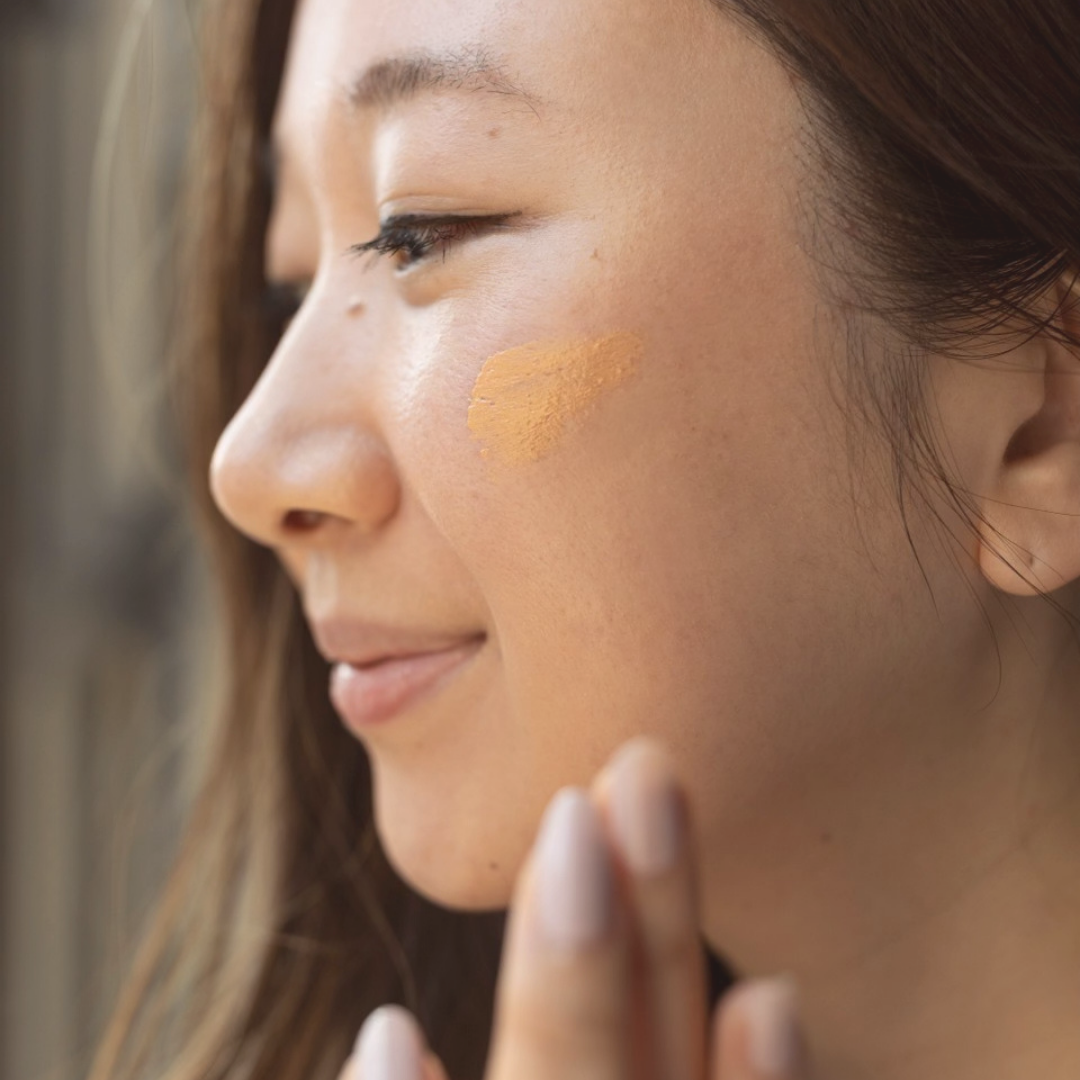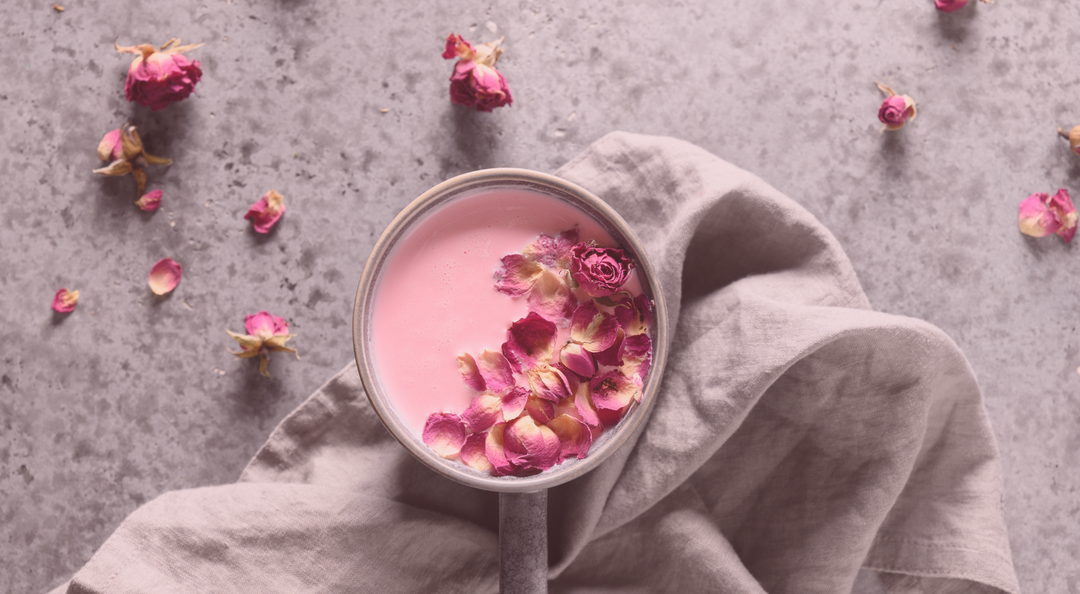There’s a lot to be said about gua sha’s origins, but not enough is being said about it. Join us on March 20 at 2pm EDT for a 1.5 hour body gua sha workshop and panel discussion with Traditional Chinese Medicine (TCM) practitioner, Kai Yim (pictured above holding a moxibustion stick).
We’ll be touching on how gua sha has become a victim of appropriation and how you can ethically make this practice a part of your self-care plan. You’ll be able to ask questions about these tools, their history and the effect this appropriation has in an open-minded, objective space. After, Kai will teach you how you can use gua sha tools for headaches, digestion, jaw tension/TMJ, scalp, neck and shoulder tension, and your sinuses.
Practicing gua sha on the body is a chance to connect with yourself from the outside and care for your physical well-being. Not to mention, a super relaxing way to transition from day to night if you’re currently working from home!
Your virtual seat includes a 1.5 hour workshop and a kit that includes:
- A special blend of our warm and floral Midnight Melody Body Oil. Just for this class, Lin will be preparing a formula especially made for gua sha / this workshop. Featuring an ultra-moisturizing base of organic sunflower and meadowfoam oils, this special blend will let your gua sha tool gorgeously glide over your skin ~ value $40
- Option to add our heart-opening Rose Quartz Gua Sha Tool (we made it optional since we know many of you already have one!) ~ value $32
- Option to add YINA’s newly launched Bian Body Gua Sha Tool ~ value $50
- Option to add both Gua Sha Tools! We will show how to use each tool on specific parts of the body ~ value $82
You will need one of the two Gua Sha tools mentioned above; if you don't already own one, please add it from the drop-down menu.
In light of the alarming rise of hate crimes targeted at Asian Americans, we’re donating 10% of ticket proceeds to AAPI Women Lead, a non-profit organization that works towards ending violence against and within Asian American and Pacific Islander (AAPI) communities in the US.

Gua sha and cultural appropriation
The line between appreciation and appropriation can be very easily crossed. The difference lies in how someone promotes a cultural practice. Are they sharing it from a place of love and respect or with the interest to make a profit from it? Gua sha has been practiced for thousands of years. Not acknowledging its centuries-old background essentially dilutes its significance, transforming culture into just another business idea and a loss of tradition over time. Kai puts it beautifully in our Q+A with her down below!
With that being said, this doesn’t mean that TCM and gua sha should be kept only for Asians. On the contrary, we would love for these practices to be more accessible and accepted in the West - as long as both their cultural origins and history are respected. When we take the time to celebrate and learn about different cultures, we can move towards creating understanding and begin to develop better relationships in our communities.
So, how can you ethically practice gua sha?
The first step is to develop a relationship with its origins and role in TCM. Gua sha is more than a face and body massage! Originally a home remedy, it’s fascinating to learn how scraping also affects your body on the inside, too. Next, recognize that TCM and gua sha are both alternative approaches to wellbeing and allopathic health practices, and not business ideas to capitalize on. Which leads us to the following step: purchase your gua sha tool from an Asian-owned business that openly provides education on gua sha’s historical and cultural origins. Transparency is key. Lastly, learn the proper technique from a practitioner.
Gua sha on the body
Before beautiful gua sha tools began to appear all over social media, this was a therapy performed at home to relieve ailments like heatstroke and colds. At the time, tools consisted of coins, spoons or even a piece of smooth wood. Gua sha was definitely not as Instagrammable as it is today!
Treatments focus on moving the body’s energy, referred to as qi in TCM. Practitioners of TCM believe that a healthy flowing qi is essential for a balanced well-being - a healthy body is, therefore, one that is energetically balanced. If something interrupts this flow, it may lead to blockages and possibly illness. A sickness signals that an imbalance is present in the body, making the goal of scraping to release this hot or cold energy, whichever may be in excess.
Gua sha on the body helps to relieve muscle pain thanks to its ability to boost microcirculation on the targeted area. Stimulating and restorative, practicing a session can release deeply built up tension and discomfort while targeting any internal imbalances. You can think of it like this: gua sha scrapes out blockages to help get energy flowing again.
Scroll on to get to know Kai and for our Q+A!
Kai Yim is a New York State board-certified herbalist and practitioner of Acupuncture (NCCAOM) and Chinese Medicine. Her upbringing was strewn with traditional Chinese medicinal foods and TCM theory, but what brought her fully into medicine was her search for solutions to her life-long eczema.
She has spent extensive time working under practitioners and masters of gua sha, Tui Na & acupressure massage, moxibustion and electrical acupuncture. Today, she wears many hats as the co-founder of Five Seasons TCM, a TCM food therapy company. She can also be found treating patients at Oak Point Health in Queens or supporting recovering addicts at a local, community clinic.
As an American-born Chinese, the golden thread of her life has been weaving two opposing perspectives into one functional paradigm: eastern understanding and the western lifestyle.

Tell us a bit about how you decided to become a Traditional Chinese Medicine practitioner.
In an uncanny way, it was decided for me. After a two year break-up with America, and a love affair with China and Hong Kong, I found myself stepping back onto US soil with a plan to study naturopathic medicine.
Shanghai’s polluted air and environment exacerbated my childhood eczema. My entire body and even my scalp bloomed into a state of chronic inflammation. I was at the point where my face was beyond recognition!
Eventually, I moved to Hong Kong where it was far less polluted and there was much more access to nature. As I explored and familiarized my senses to Hong Kong, I found myself being re-exposed to so much of the traditional medicine I was raised with. My body was finally able to begin healing.
Back in the states, I started seeing an acupuncturist in Chinatown named Dr. Leung. One day I told her about my plans to attend naturopathic school. She looked me dead in the eyes and said in Cantonese, “My girl, you need to go study Chinese medicine!” She then went on to tell me to attend a small Chinese Medicine college in Long Island: The New York College of TCM (NYCTCM), and that upon graduating, she’d sell me her practice.
From there it was like walking on water, things just serendipitously fell into place! And, as they say, the rest is a fortune cookie.
What are some ways to honor gua sha’s ancient Chinese roots and ethically make this practice a part of your self-care ritual?
This popularization around gua sha has led to a considerable amount of disrespectful and offensive behavior around the practice, education and the monetization of this traditionally Chinese technique. There are countless white faces and brands that have come to claim that they are the originators, inventors, creators or fill-in-the-blank of gua sha, without paying any homage to its origin.
It’s personally been painful to witness, but I finally have the words to convey and educate, which is why I am so glad you are asking this question!
One small yet profound way of honoring its roots is to learn the proper pronunciation (gwah-shah). When we break down this term, we get two individual Chinese characters: “gua” which suggests rub or to scrape and “sha,” which translates to sand. “Sha” describes the reddish elevated sand-like rash or a millet-like skin rash that will often appear on the body as a result of the treatment. Some practitioners of TCM like Ivy Lee, MSTCM, LAc, have encouraged people to pronounce it the way they learned from their families or in their culture.
Chinese is a very symbolic and characteristic language. Making an effort to pronounce and understand why it's named the way it is, goes a long way to showing respect to the people who it belongs to. For Chinese people, it’s a rich way to preserve and pass along both culture and a healing tradition.
Another strong way of demonstrating regard and appreciation for gua sha’s roots is studying with someone from the original culture. There are more and more practitioners from the Chinese culture realizing how important it is to claim, share and talk about their experience with gua sha - me included!
Some great practitioners on the scene: Ada Ooi, Lanshin, Amrit Singh (she is not Chinese, but a POC and has CLEARLY done work to show respect and appreciation for the tradition), Dr. Ping Zhang.

Why is it important to learn gua sha from a TCM practitioner?
Licensed TCM practitioners spend 3-4 years studying both western and TCM anatomy (ie: the meridians, organs and vessels). We have an intricate understanding of the meridian pathways, the points along the channels, their functions and the directions in which they travel. These nuances make vast differences in the results we see, and we can speak extensively on how to address certain issues using different areas on the body (not just the face).
Additionally, I feel it is important to mention safety and cautions! A licensed TCM practitioner can easily point out which points are contraindicated in certain circumstances. For instance, we (acupuncturists and licensed practitioners) know that if you are pregnant or even possibly pregnant, to avoid doing gua sha on the tops of the shoulder. There is a point there which has a strong descending function, which could possibly cause a miscarriage.
I often explain gua sha like this: think about the meridians of our body as rivers that blood and oxygen travel through. Within the river lies a riverbed which is where metabolic waste, lactic acid or natural byproducts from daily living tend to settle. This waste material can impede circulation and cause pain or discomfort in the body. By doing gua sha on the body, we kick or scrape up this “sha” or waste to the surface. Once at the superficial layers of our tissues, our bodies have an easier time removing the waste material, clearing out stasis and stagnation and therefore have provided a better pathway for blood circulation, oxygen exchange, hormones, enzymes and more to travel through.
To learn gua sha from a TCM practitioner is like pulling back from a piece of artwork, only to realize the piece before you only made up a tiny portion of the actual picture. It ensures that you are learning traditional, as well as conventional techniques, and receiving all the benefits, understandings, and heedances of the practice.
Do you have any tips on how to choose a gua sha tool and why it’s important to purchase from an Asian-owned brand?
When choosing a gua sha tool, I recommend looking at a few factors. First, what areas of the body will you be working on? Is it just the face or face and body? If you are only going to be working on the face, you will want a size that is comfortable for your specific hand size.
Next, I consider the material. Today’s colorful stones are nice for the face since they’re slightly cooling, which is perfect for reducing puffiness around the eyes and face. However, for body use steel or bian stone is better, like the one from YINA.
Lastly, I consider the thickness or roundness of the edges of the tool. From my experience, if the edge is too thick, it doesn't deliver the stroke and provoke the sha properly. If it’s too thin, it can feel slightly sharp or tug too much at the tissue.
I feel so fortunate to be able to share my thoughts and experience here on gua sha, and that is only because Lin and Pink Moon have so graciously invited me to be a guest and speaker.
When you support Asian-owned brands and entrepreneurs who have grown up with this tradition in their lives, you’re likely to gain much more insight as to why and how it should be used. You’re ensuring that you are supporting people who identify with the original culture, as opposed to other brands that are completely dissociated from the product and its origins.
This demonstrates clear consideration and respect for the practice as well as its people. Not only are you enriching and blessing your own experience around the practice, but you ultimately feed into the lifecycle of preserving a culture!




